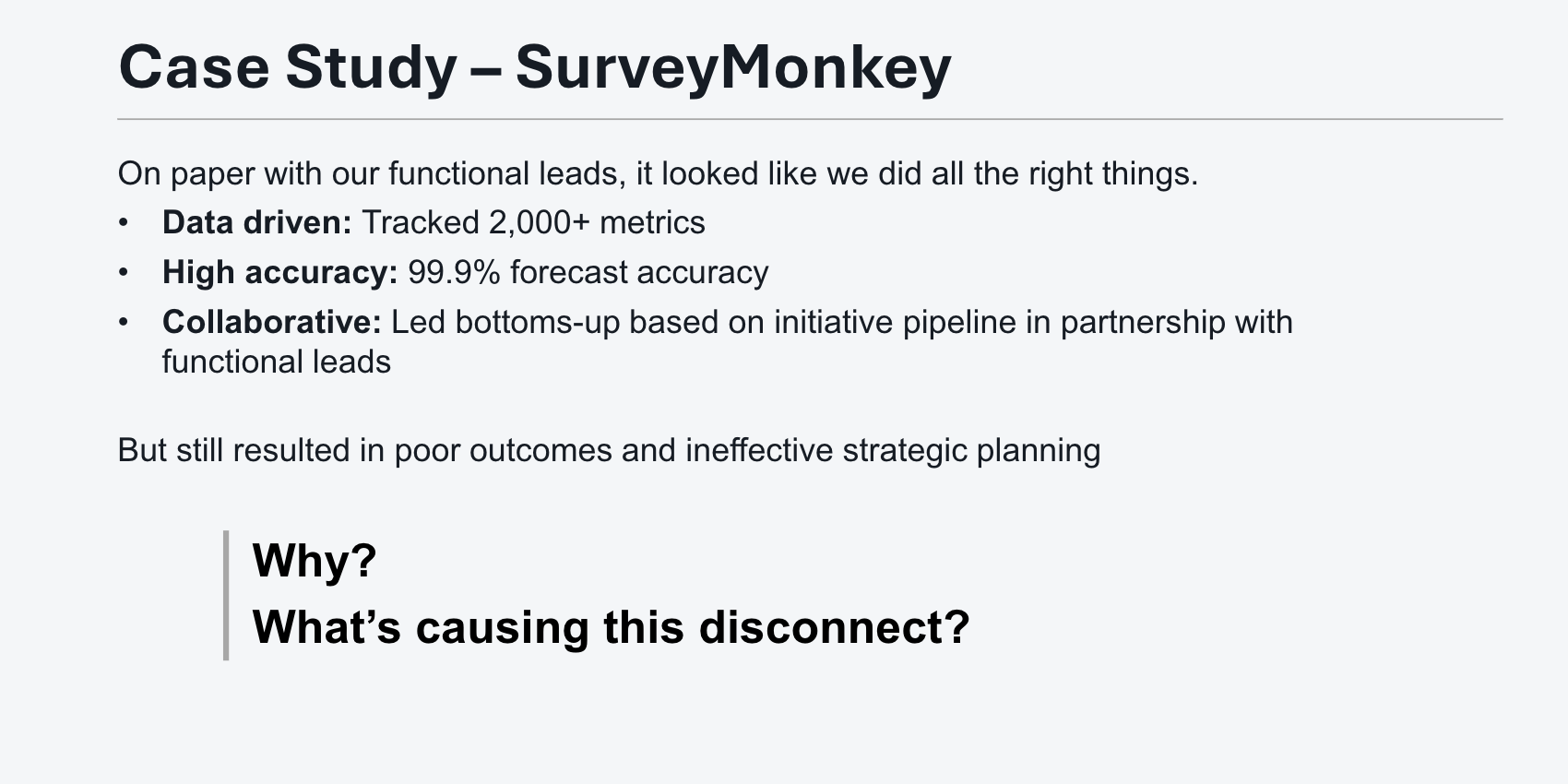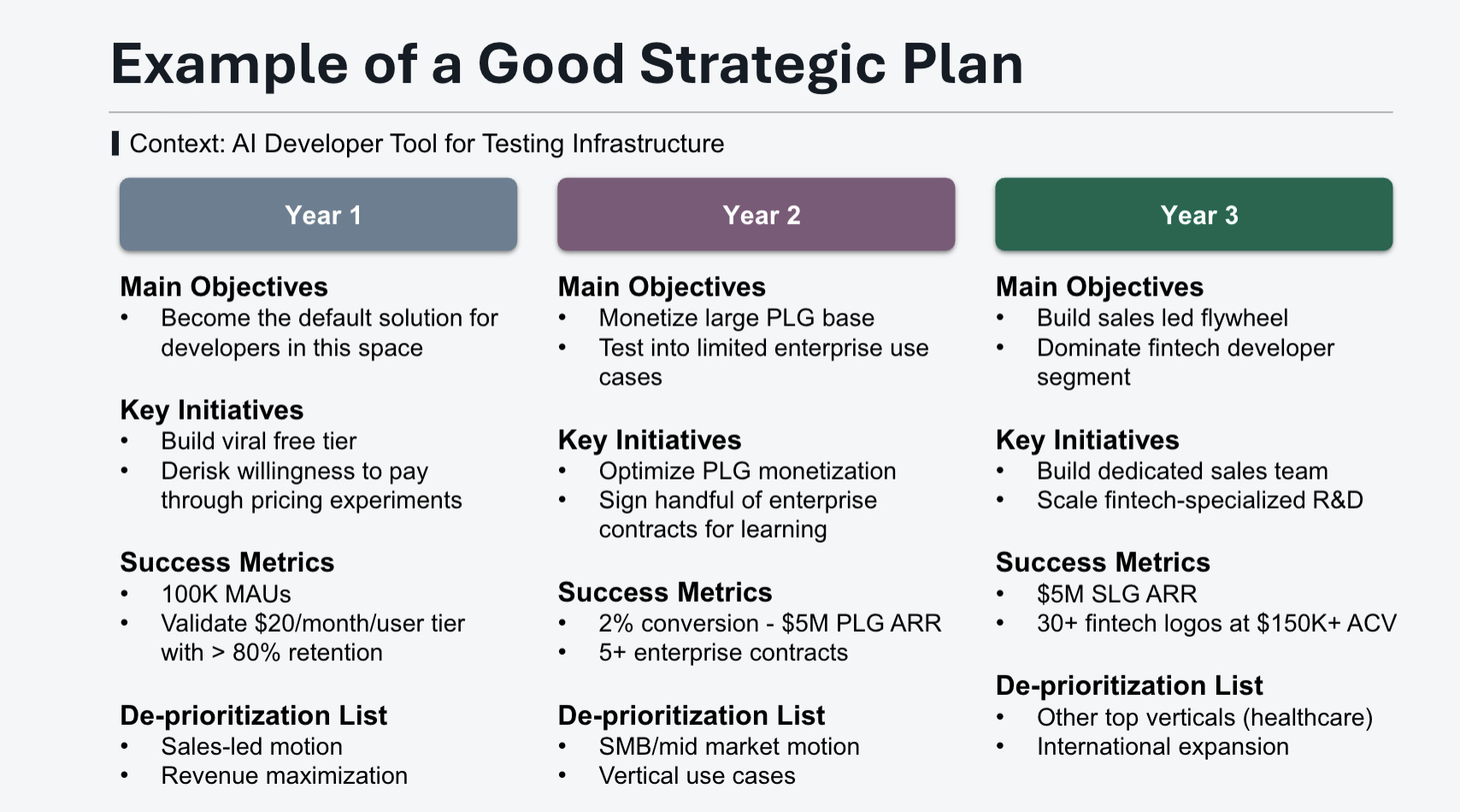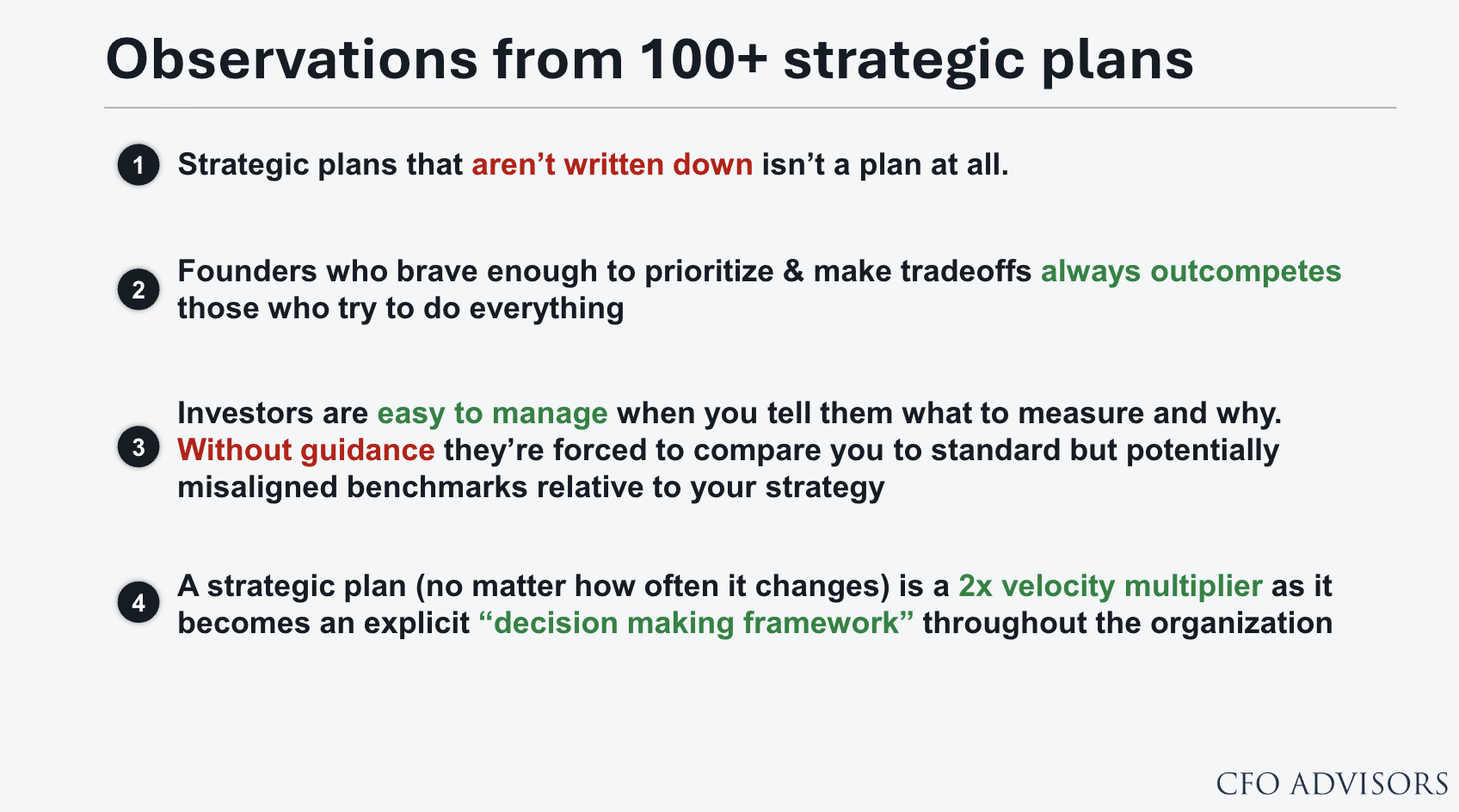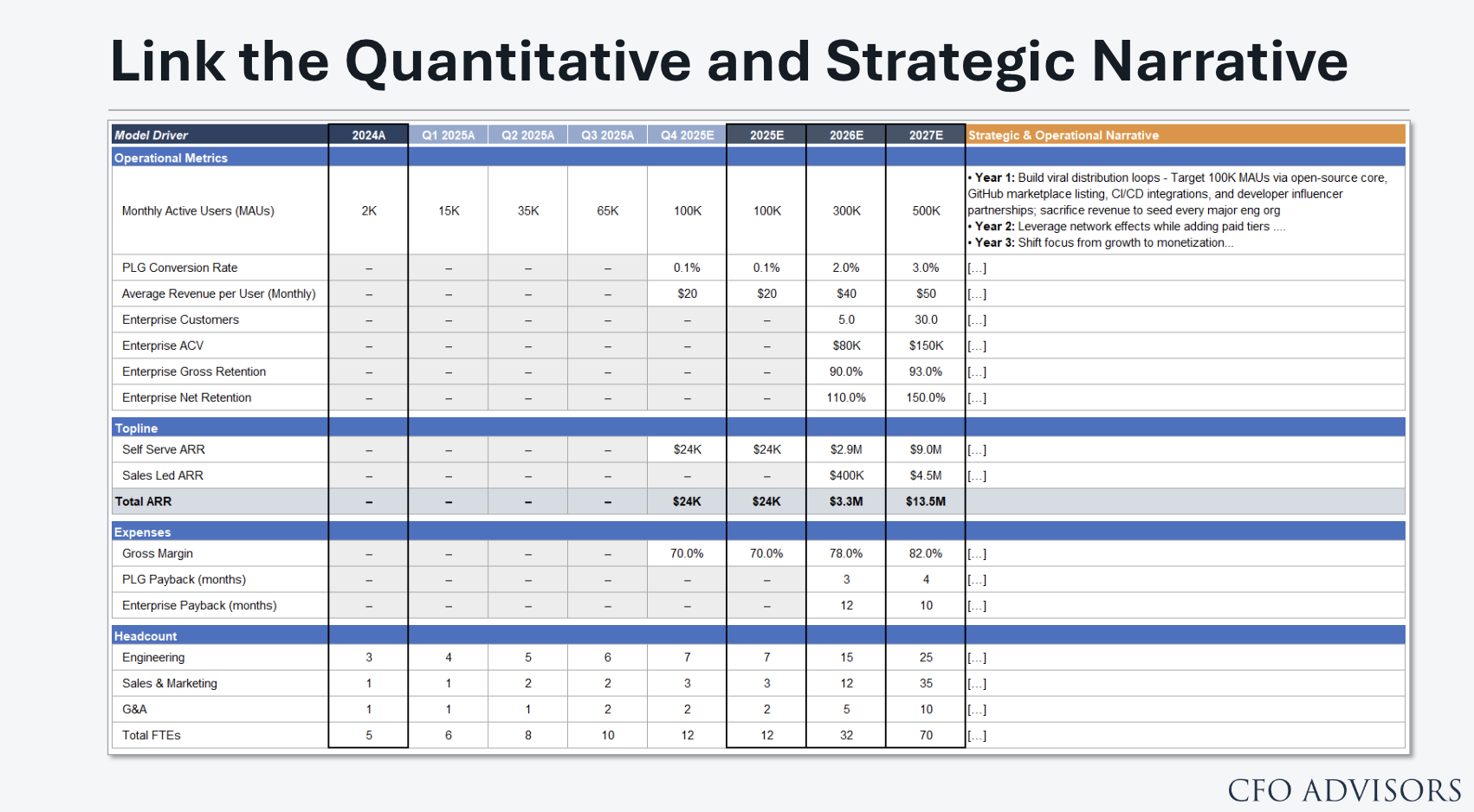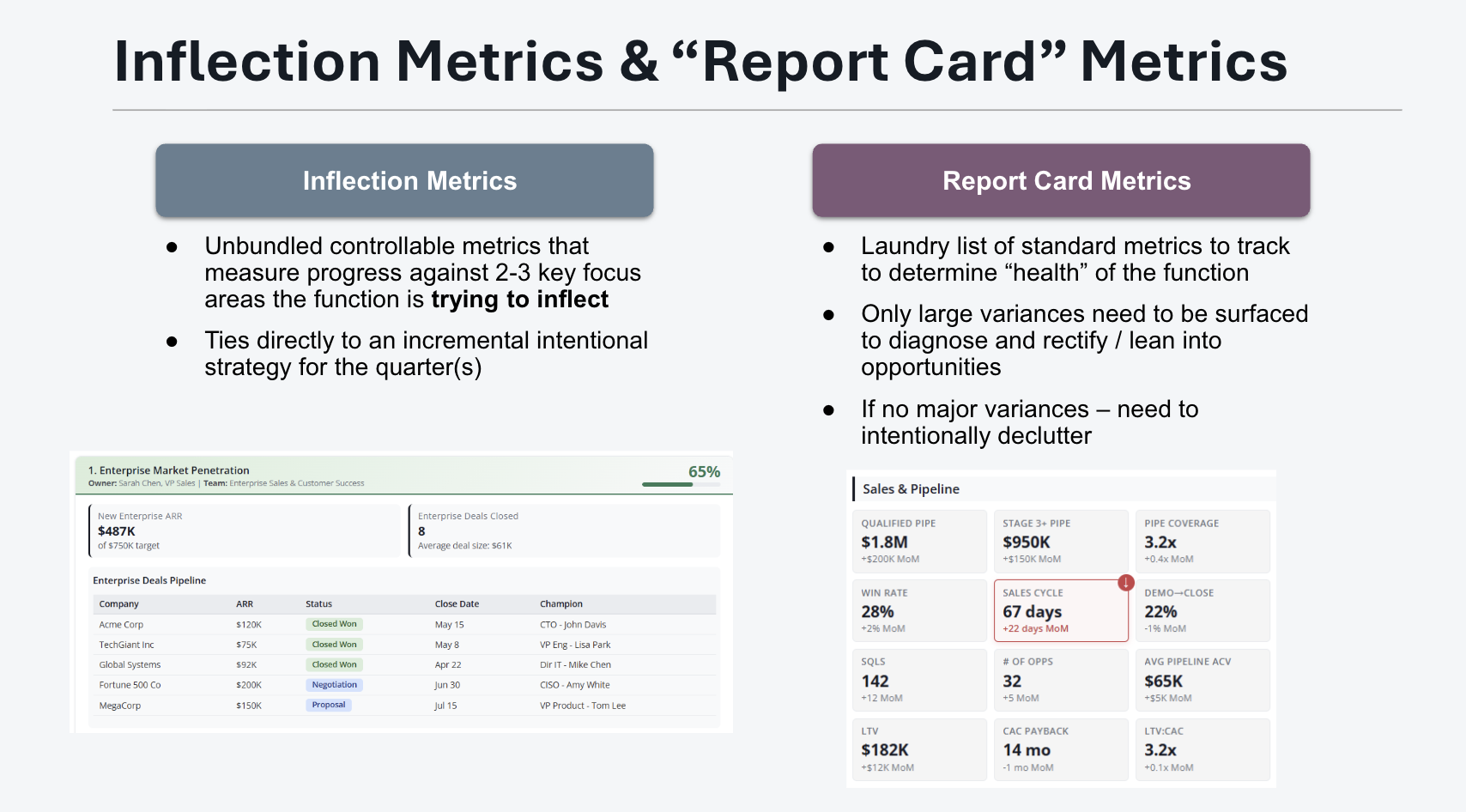Lighstpeed x CFO Advisors: Strategic Planning & Operating Models For High Growth Startups
Strategic Planning That Actually Creates Value: The Metric Most Startups Miss
.jpg)
Hosts
Speakers
Event Recap & Takeaways
Strategic Planning That Actually Creates Value: The Metric Most Startups Miss
Startups don't fail for lack of data, they fail for lack of focus. After hosting hundreds of strategic planning sessions with VC-backed companies, one pattern emerges: teams confuse meticulous planning with effective strategy. The goal isn't a perfect forecast, but aligning the company around a few decisive bets, sequencing them over time, and operationalizing them so teams move faster with clarity.
The missing piece most teams overlook? The value creation metric. Track it, inflect it, and your value capture (ARR, NRR, ACV) will follow. In SaaS, this was often sales-oriented metrics such as NDR, magic number, LTV / CAC. In an AI world, companies need to clearly define their product value creation metric: how is your product delivering value beyond a pilot / early term contract?
V-Shaped Planning: Start From Where You Need to Be
Most companies default to N-shaped budgeting—bottoms-up, incremental stacking ("+2% from pricing, +3% from X"). This anchors teams to the status quo and creates zombie companies with negative unit economics.
Instead, use V-shaped planning: start from the growth profile and milestones you must hit to be fundable, then work backward to identify the few bets required now to get on that path.
Bad plan: Grow quickly, make something customers want, hit $1M ARR.
Good plan:
- Year 1: Become the de facto solution and de-risk willingness to pay
- Year 2: Deepen PLG, hit 2% conversion, test 5 enterprise logos
- Year 3: Spin up the sales flywheel in the highest-pull vertical
Why this works: sequencing creates velocity. Trade-offs prevent dilution across too many initiatives.
Think in Horizons: The Framework That Forces Choice
For each horizon, define:
- The one or two key objectives
- The sequence of bets to get there
- How you'll measure success
- What you will not do
This creates a decision-making framework that the whole organization can use. It's how you avoid the "do everything" trap.
The Mono Narrative: From Strategy to Operating Model
Distill your plan into the critical few metrics—the 10–20% that drive 80–90% of outcomes—mapped to initiatives over time. These become the core assumptions in your model and the heartbeat of your operating cadence.
Two metric types to run the company:
Inflection metrics: The one or two you're actively trying to bend this horizon (e.g., MAUs in PLG phase, ACV/NRR in expansion). These go into exec reviews.
Report card metrics: Hygiene metrics you monitor in the background, only escalating when thresholds break.
The Key Insight: Prioritize the Value Creation Metric
Here's what most teams get wrong: they obsess over value capture (ARR, NRR, ACV)—important, but lagging. The companies that win obsess over value creation—the measurable impact you deliver to customers—because it's the leading indicator.
Value creation is your product's actual impact: minutes saved, errors prevented, dollars per ton to orbit, cases resolved, minutes watched. It's messy, company-specific, and hard to benchmark—but it tells you if you're building compounding advantage.
Value capture is the economics you extract (ARR, NRR, ACV). Optimize this after you've proven you create outsized value.
Make value creation an inflection metric:
- Define a concrete metric for this horizon. Set a target that, if achieved, makes your product the obvious choice versus alternatives.
- Track by quartiles, not just averages. Most distributions are bimodal (superusers and a large low-value cohort). Find and fix the low-value segment.
- Review it monthly. Tie resourcing to it and change priorities when it stalls.
This is especially critical in the AI era, where enterprise buyers are testing multiple tools and keeping one. If your product value creation metric dwarfs alternatives, retention and expansion follow.
Operationalize or It Won't Matter
Forecast accuracy is 70% operationalization, 30% mechanics. Every functional lead should always know:
- The inflection metric they own (including the value creation metric where relevant)
- If they're ahead or behind
- How many hires and how much budget remain this quarter
Run on timely data, not perfect data:
Don't wait six weeks for ERP to make decisions. While accounting must be 100% right for tax/compliance, running the business requires speed. 95%-timely beats 100%-six-weeks-late.
- Pull real-time data from spend management, payroll, CRM, and product
- Push weekly snapshots via Slack: pacing vs goal, spend-to-date, open POs, hires remaining
- Categorize transactions daily to departmental budgets mapped 1:1 to the model
This shifts conversations from "you missed six weeks ago" to "you're behind $200k pipeline; you have $300k and two hires left—what's your move?"
Keep Your Model Simple
Models are calculators, not crystal balls. Keep structure tight:
- A core forecast tab (3 statements, actuals + forecast)
- Charts/tables and a visual "what do we have to believe" dashboard
- Two assumption tabs: headcount and other drivers
- Analysis tab: unit economics, payback, one-offs
- Sources: direct exports mapped to ERP chart of accounts
Only forecast what you already measure. Assign owners to every key output. Forecast at a level that drives decisions, not bank fees in 18 months.
Managing Investors with Credibility, Not Theater
Investors look for beat-or-miss discipline, venture-scale ambition, and a liquidity plan if things go sideways.
Tactics:
- Present an 80% confidence management case; raise guidance as risk burns down
- Share a resilient scenario upfront (how investments resize; liquidity impact)
- Anchor updates on strategy and inflection metrics—P&L is the output
- Open each board with the top 2–3 priorities; next meeting, show execution against them
AI Era: Pilots, Churn, and Proof of Value
Many AI buyers are in "test five tools, keep one" mode. That means:
- Track % ARR from pilots/early-termination; discount pilot revenue by historical conversion to gauge runway exposure
- Make your value creation metric the north star for product and go-to-market
- Separate value creation (leading) from value capture (lagging)
- Inspect quartiles to find and expand superusers while fixing the low-value cohort
The Payoff: Operational Excellence as a Moat
Very few companies achieve all four pillars of operational excellence. Those that do move faster and compound advantage:
Transparency: People understand what happened and why
Alignment: Strategy, trade-offs, and the few metrics that matter are clear
Accountability: Beats/misses trigger changes to priorities or resources
Autonomy: Teams know goals and resources and proactively close gaps
The Bottom Line
Choose the few bets that matter. Sequence them into horizons. Make value creation your inflection metric—it's the leading indicator that unlocks everything else. Translate strategy into a simple, owned model. Run the company on timely, pushed data. Keep investors aligned on strategy, confidence levels, and resiliency.
Precision is table stakes. Prioritization is the advantage. And measuring what you create before you capture it? That's the compounding advantage most companies never discover.



